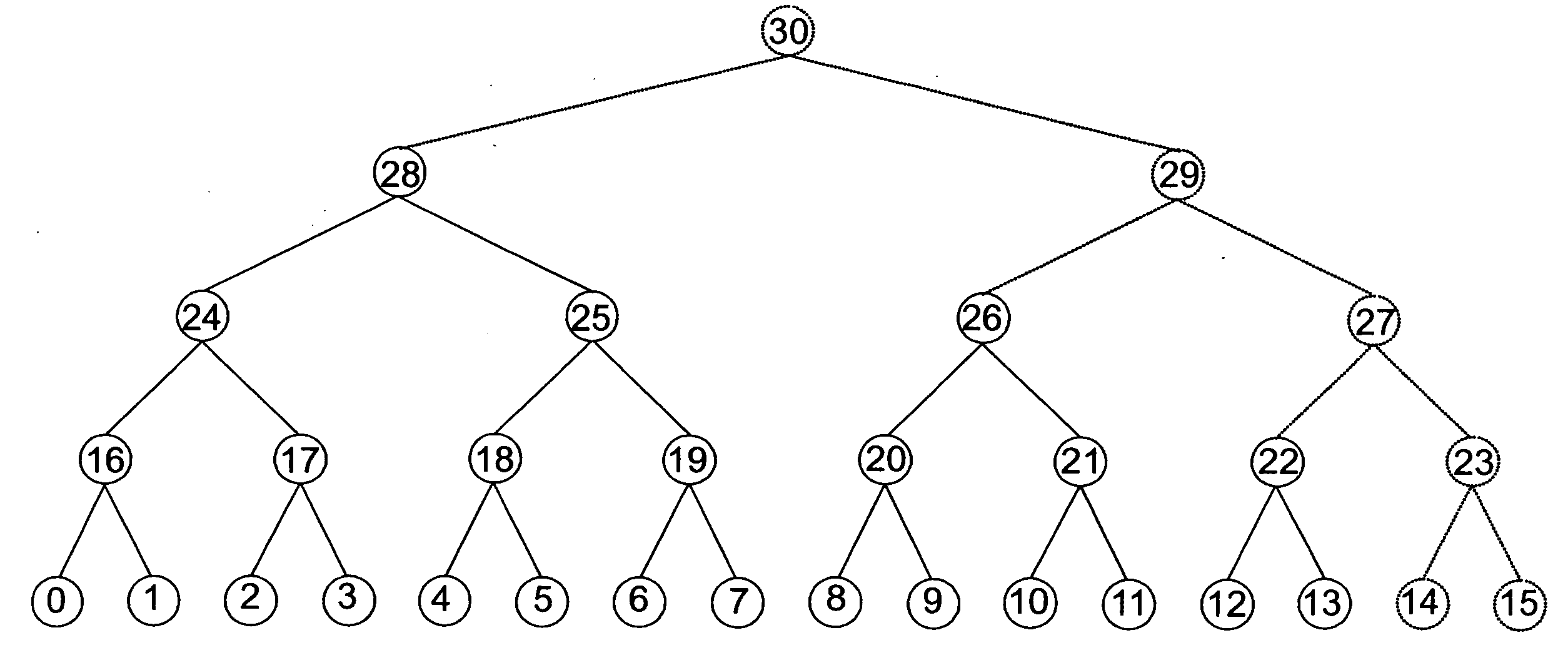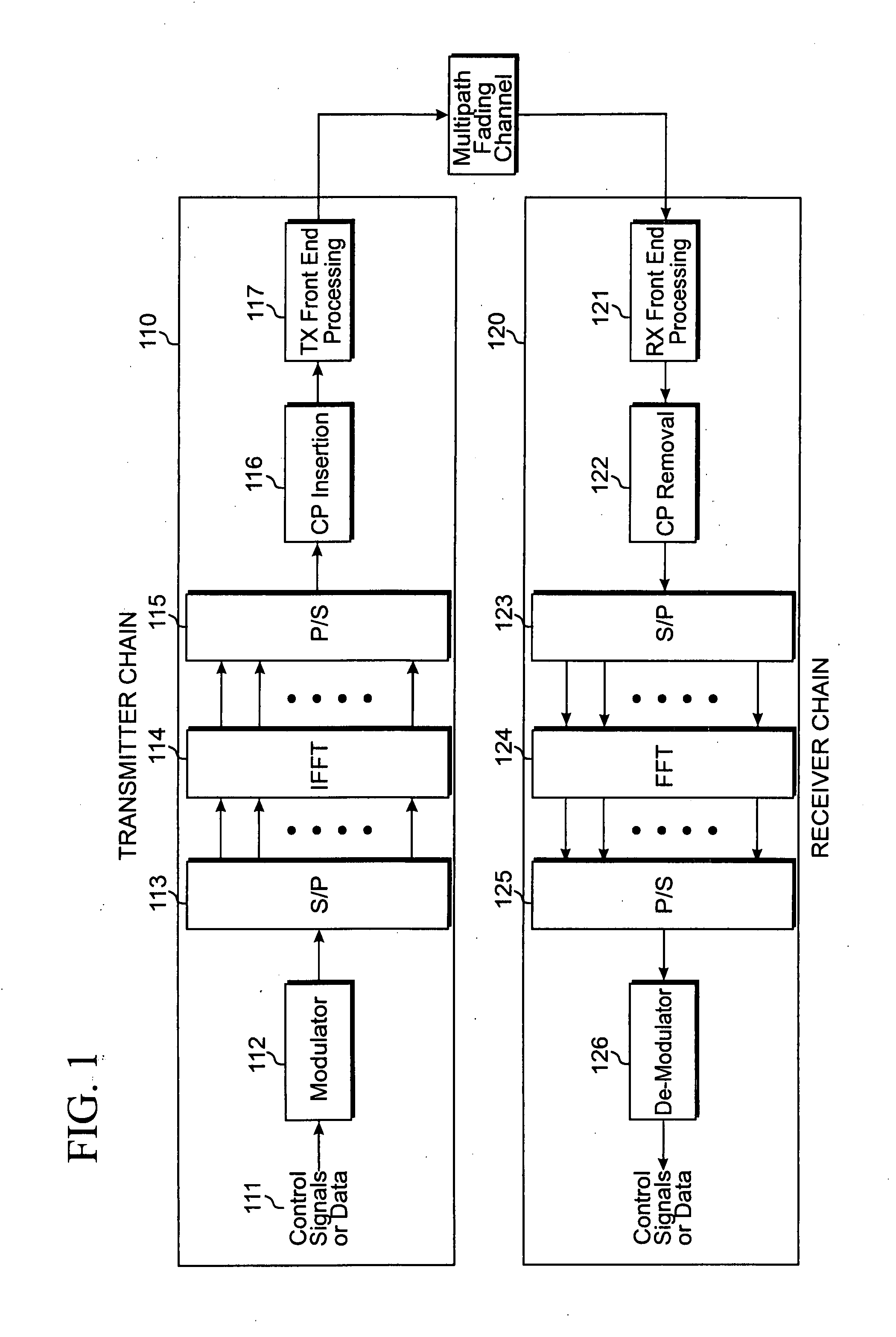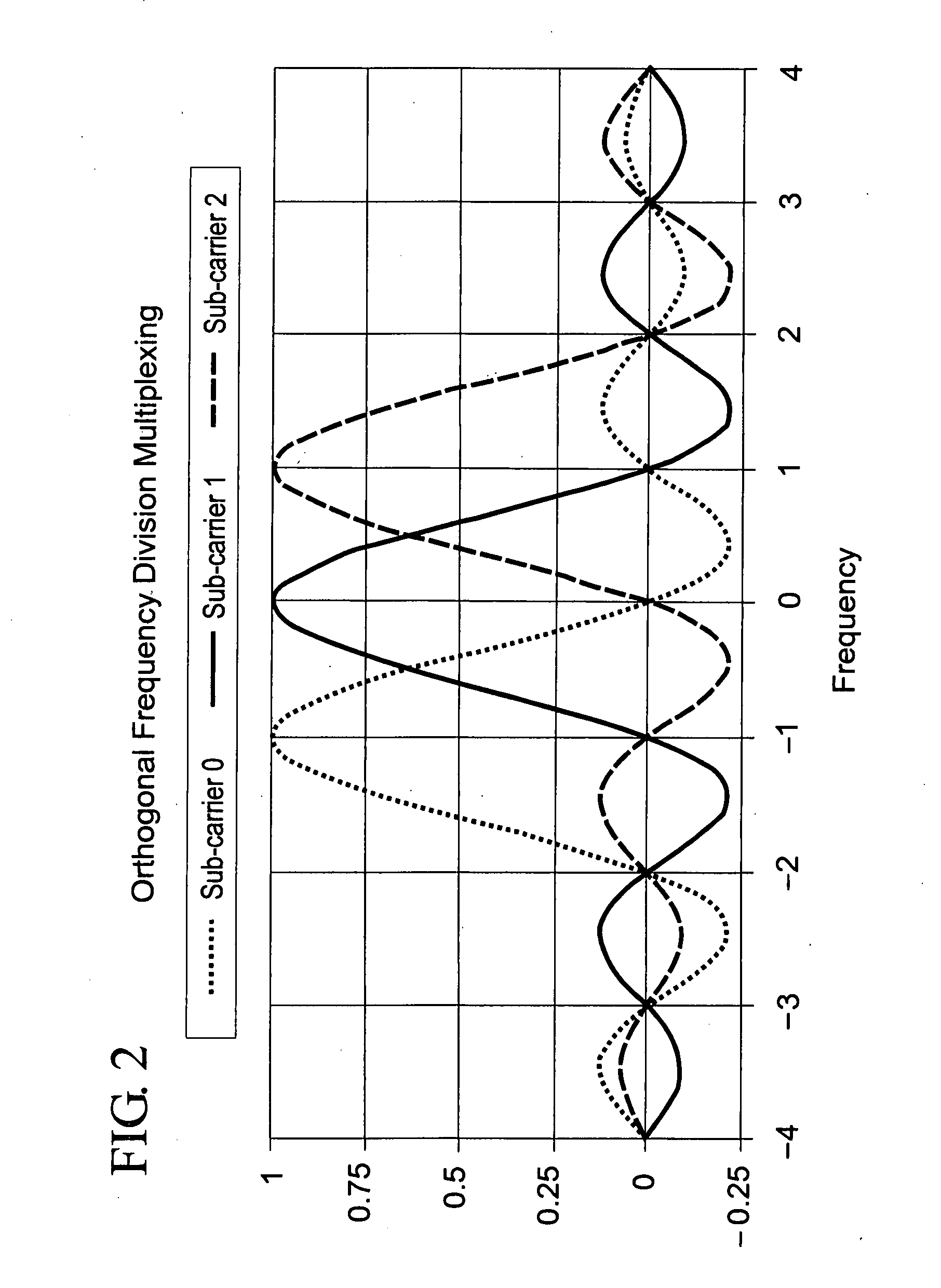Methods and apparatus for mapping control channels to resources in OFDM systems
a control channel and resource technology, applied in the field of transmitting data, can solve problems such as increasing decoding complexity at the receiver
- Summary
- Abstract
- Description
- Claims
- Application Information
AI Technical Summary
Benefits of technology
Problems solved by technology
Method used
Image
Examples
first embodiment
[0065]In a first embodiment according to the principles of the present invention, a graph with multiple rooted trees is constructed with at least one leaf node representing one resource element that may be allocated for control channel transmission, and at least one inner node or root node representing the set of resource elements that may be allocated for control channel transmission, the set of resource elements being represented by the leaf nodes that are descendants of the inner node or the root node. These trees are used in resource allocation and blind decoding of the control channels. As an example, in FIG. 12, the leaf nodes are indexed from 0 to 13. Using a binary tree construction, we can construct a graph with three rooted binary trees as shown in FIG. 12A. The three trees are tree 310 with Node 24 as a root node, tree 311 with Node 23 as a root node, and tree 312 with Node 20 as a root node. Each leaf node corresponds to a physical control channel element (CCE), i.e., a ...
second embodiment
[0067]In a second embodiment according to the principles of the invention, a graph with one rooted tree is constructed where at least one leaf node represents one resource element and at least at least one leaf node does not represent any resource element. For example, we can construct one binary tree as shown in FIG. 12B with Node 30 as its root node. Note that in this tree, there is no resource element corresponding to either one of Nodes 14, 15, and 23. Similarly, some of the leaf nodes below Nodes 27, 29, and 30 have no resource elements corresponding to them. Preferably, Nodes 14, 15, and 23 can be reserved or be used to indicate either no resource allocation or some other purpose. Nodes 27, 29, and 30, however, can still be used. For example, a resource allocation with Node 29 to a control channel may mean the physical CCEs that represented by node 8, 9, 10, 11, 12, 13 are used for that control channel.
[0068]It is assumed that there is a control channel element indexing scheme...
third embodiment
[0071]In a third embodiment according to the principles of the present invention, the mapping from resource elements to tree nodes may be cell-specific or change over time. For example, in FIG. 12A, the leaf Node 3 may represent CCE 3 in one subframe and represent CCE in another subframe. Also, at the same time instant, the leaf Node 3 may represent CCE 4 in a first cell and represent CCE 9 in a second cell. Different mapping over time and across cells is beneficial in randomize the interference over time and across cells. It is also possible that the mapping from resource elements to tree nodes is differently for different UEs, as long as the base station can resolve the possible conflict between different mappings.
PUM
 Login to View More
Login to View More Abstract
Description
Claims
Application Information
 Login to View More
Login to View More - R&D
- Intellectual Property
- Life Sciences
- Materials
- Tech Scout
- Unparalleled Data Quality
- Higher Quality Content
- 60% Fewer Hallucinations
Browse by: Latest US Patents, China's latest patents, Technical Efficacy Thesaurus, Application Domain, Technology Topic, Popular Technical Reports.
© 2025 PatSnap. All rights reserved.Legal|Privacy policy|Modern Slavery Act Transparency Statement|Sitemap|About US| Contact US: help@patsnap.com



